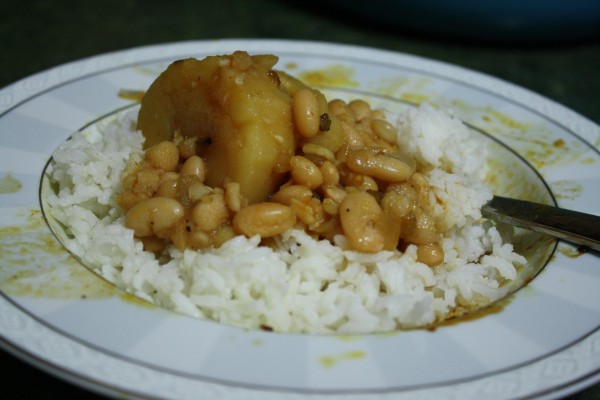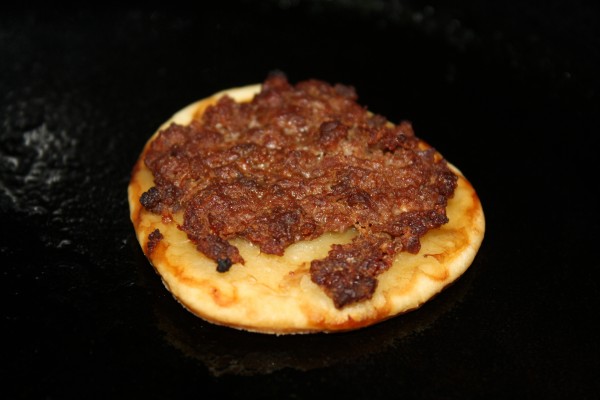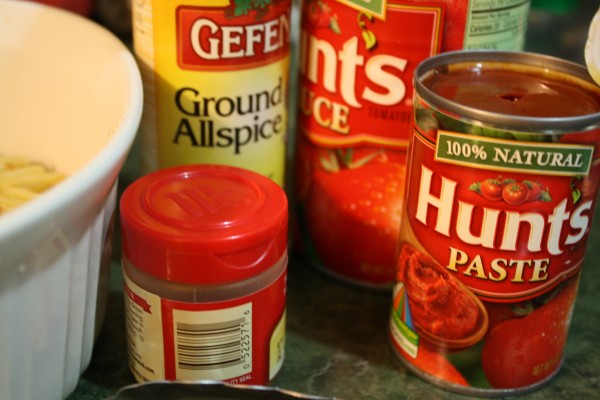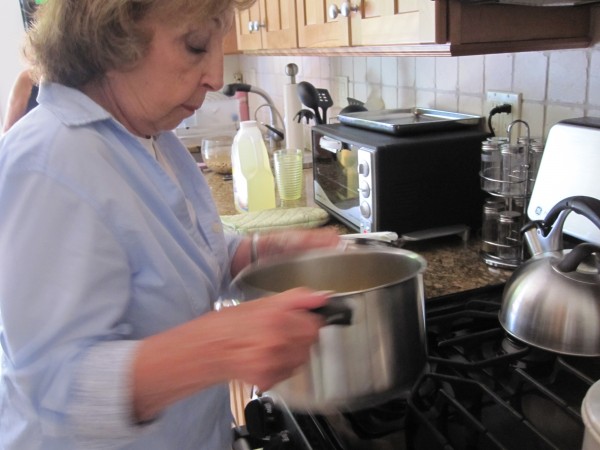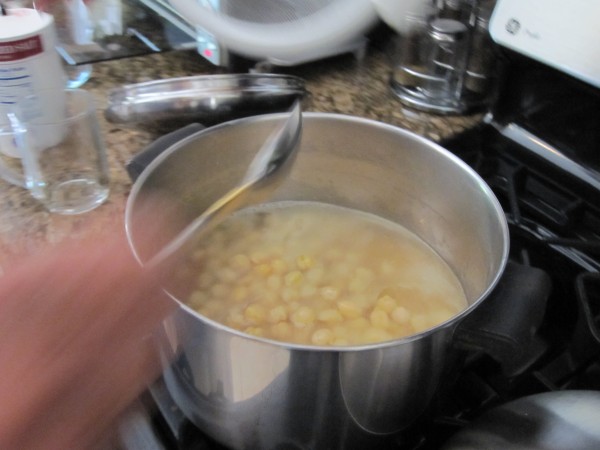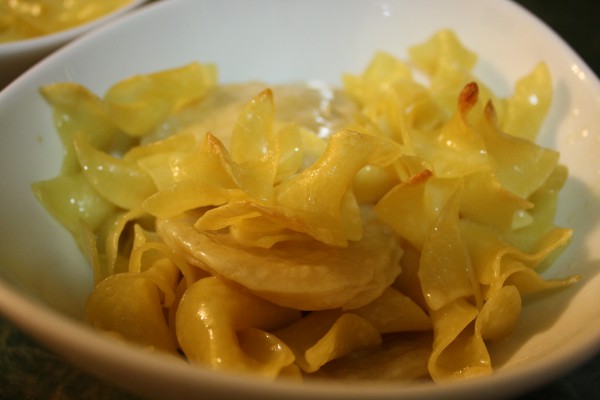
A while back, Stephanie posted about kelsonnes, a traditional Syrian stuffed pasta dish. While many people use pre-made dough, making it from scratch is not so hard. It’s pasta that you can make without a pasta maker, so it’s totally worth it. The stuffed pasta is so giant that you get a ton of cheese, which is amazing. We usually eat these with egg noodles baked with butter. The buttery noodles get nice and crispy, mmm.


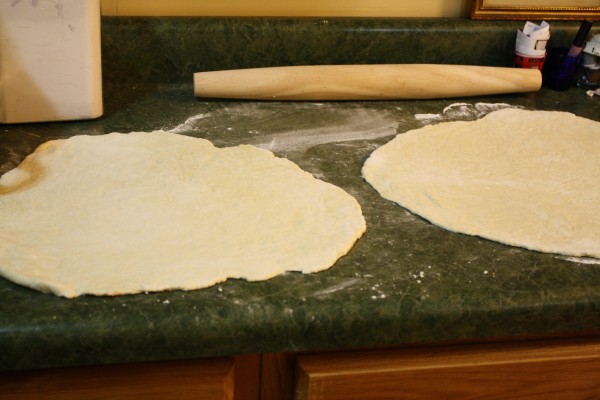
The recipe said that it yields 60 kelsonnes. I made 50. It really depends on the thickness of the dough. And no, I don’t serve/eat all of them at once. I usually make about 4 per person (of course we serve this alongside other traditional Syrian foods) and freeze the rest for an easy dinner later in the week.
I made individual bowls of noodles and kelsonnes here. You really don’t have to do that, but I like to take advantage of my oven proof bowls, so I do. If doing it this way, reduce the oven time and watch them closely. You don’t to burn the noodles too much!
Kelsonnes, adapted from the red Deal Delights cookbook:
For the dough:
- 5 cups flour
- 2 eggs
- Pinch of salt
- About 2 cups water
For the filling (I cut the original recipe in half for you – otherwise there is WAY too much leftover cheese):
- 1 pound meunster cheese, grated finely (I use the grating disc in my food processor), about 5 cups
- 1 egg
- Pinch of salt
- 1/4 teaspoon baking powder

 Directions:
Directions:
1. Make the dough: combine flour, eggs, and salt. Add the water in a slow stream and mix together until you get a soft dough.
2. Combine filling ingredients, set aside.
3. Split the dough in half and roll out each half of the dough on a floured surface to 1/8 inch thickness.
4. Drop a heaping tablespoon of the cheese mixture every 3 or so inches on half the dough (make sure you have enough room to close the dough between – see picture).
5. Cover the mounds with the other half of the dough.
6. Cut out the rounds with a round cutter (about 2 1/2 inch).
7. Repeat with remaining dough.

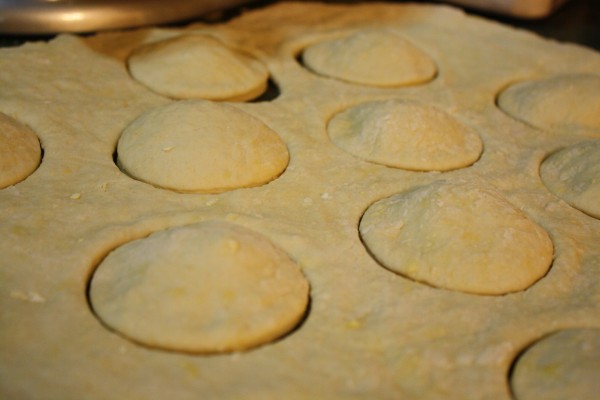
To assemble the dish:
For 4 people you will need:
- 1 pound bag egg noodles
- 12-20 kelsonnes, depending on how much your eaters like them
- 3 tablespoons butter
- Some salt
1.Preheat the oven to 350 degrees.
2. Bring a large pot of water to a boil.
3. When boiling, add the kelsonnes. Boil for 5 minutes before adding the pasta.
4. Boil according to the time written on the package. Drain.
5. Combine butter, a pinch of salt, noodles and kelsonnes in a large casserole. Mix until the butter melts.
6. Bake in oven for 20 minutes, until the top noodles begin to brown and get crispy.


I have a confession to make. We made kaak a really long time ago. Probably more than 6 months ago, actually. We just never got around to writing up the post because the pictures were stuck on Adele’s camera, and because we had so many other interesting things to share with you. Better sooner rather than later, right?

